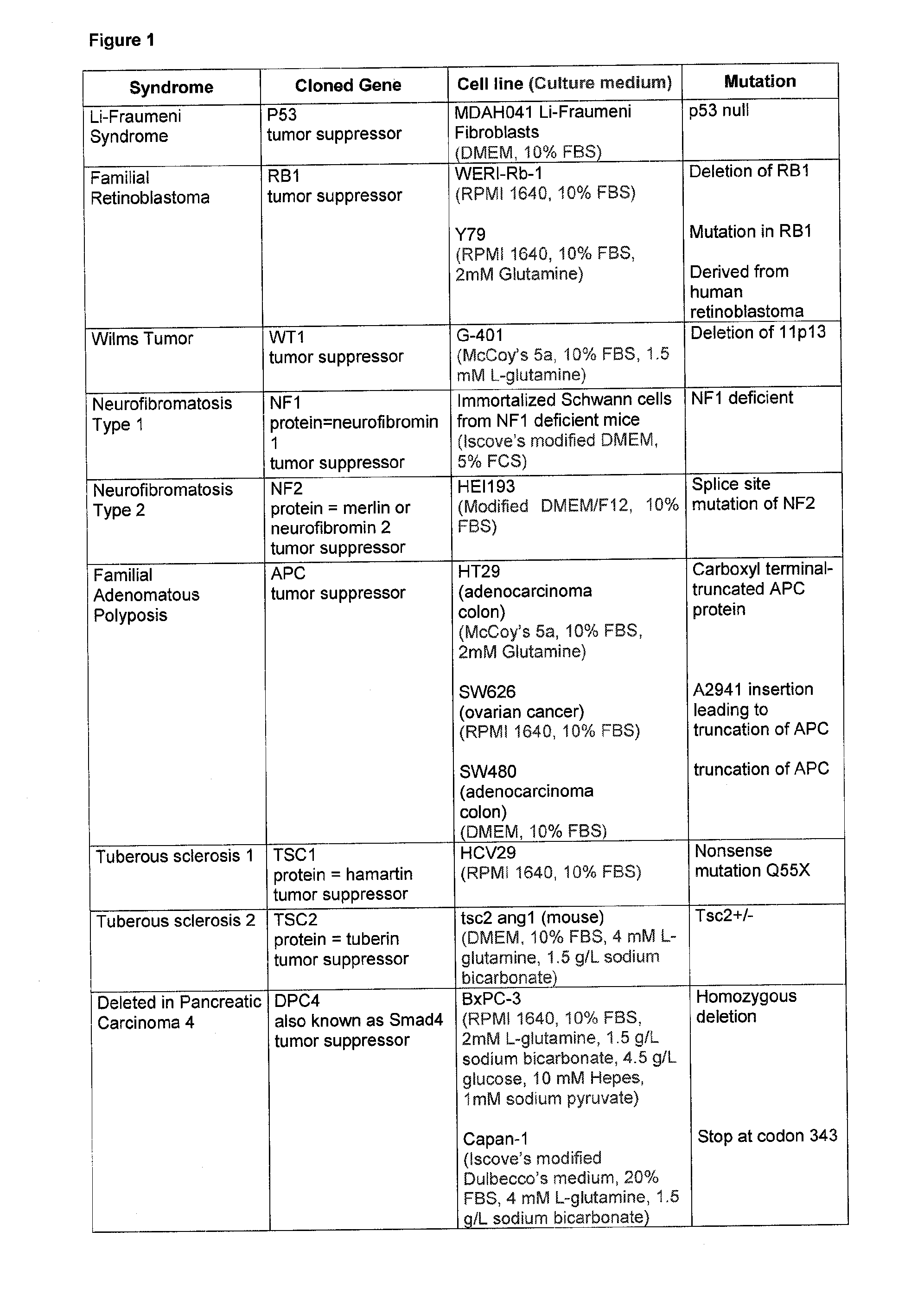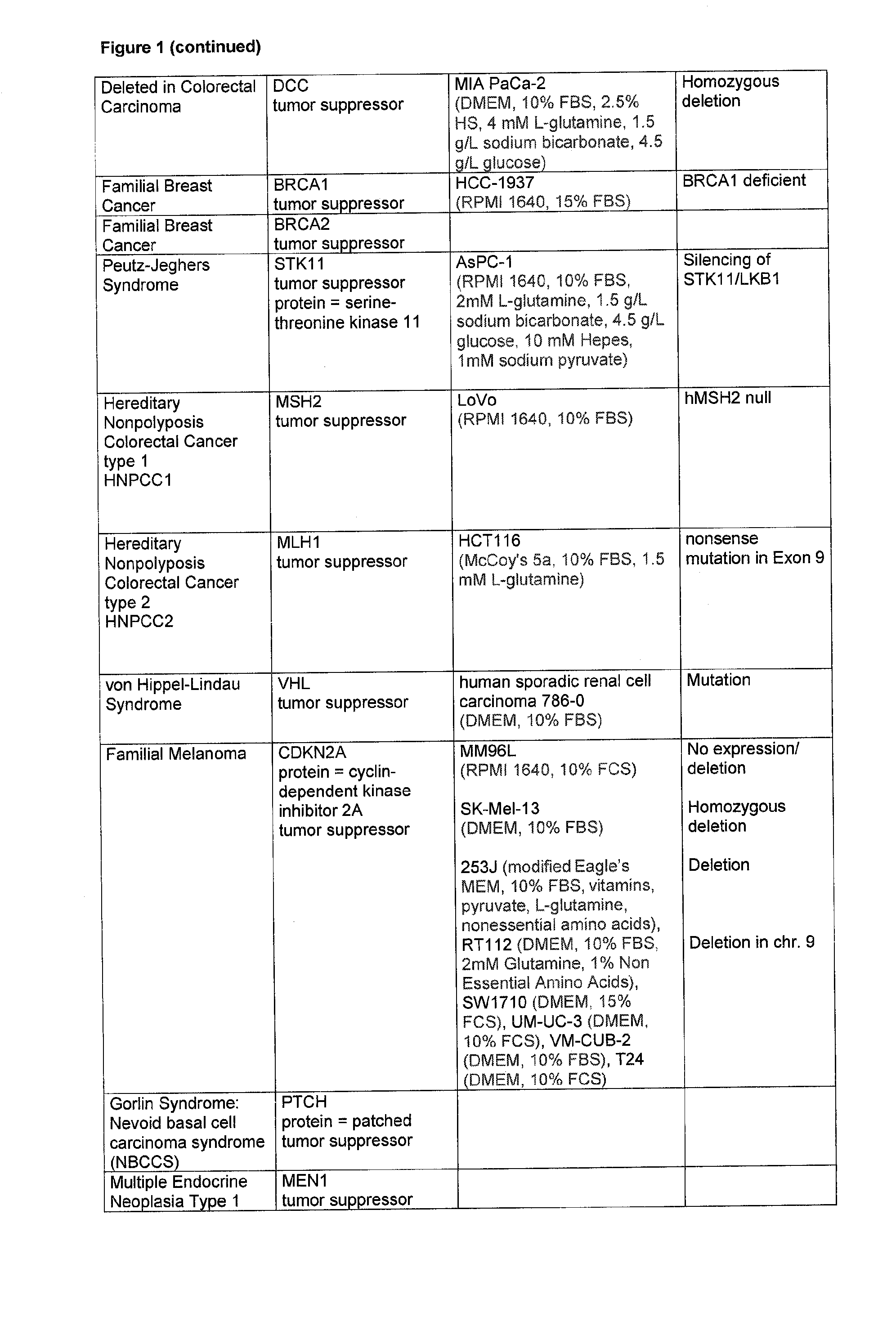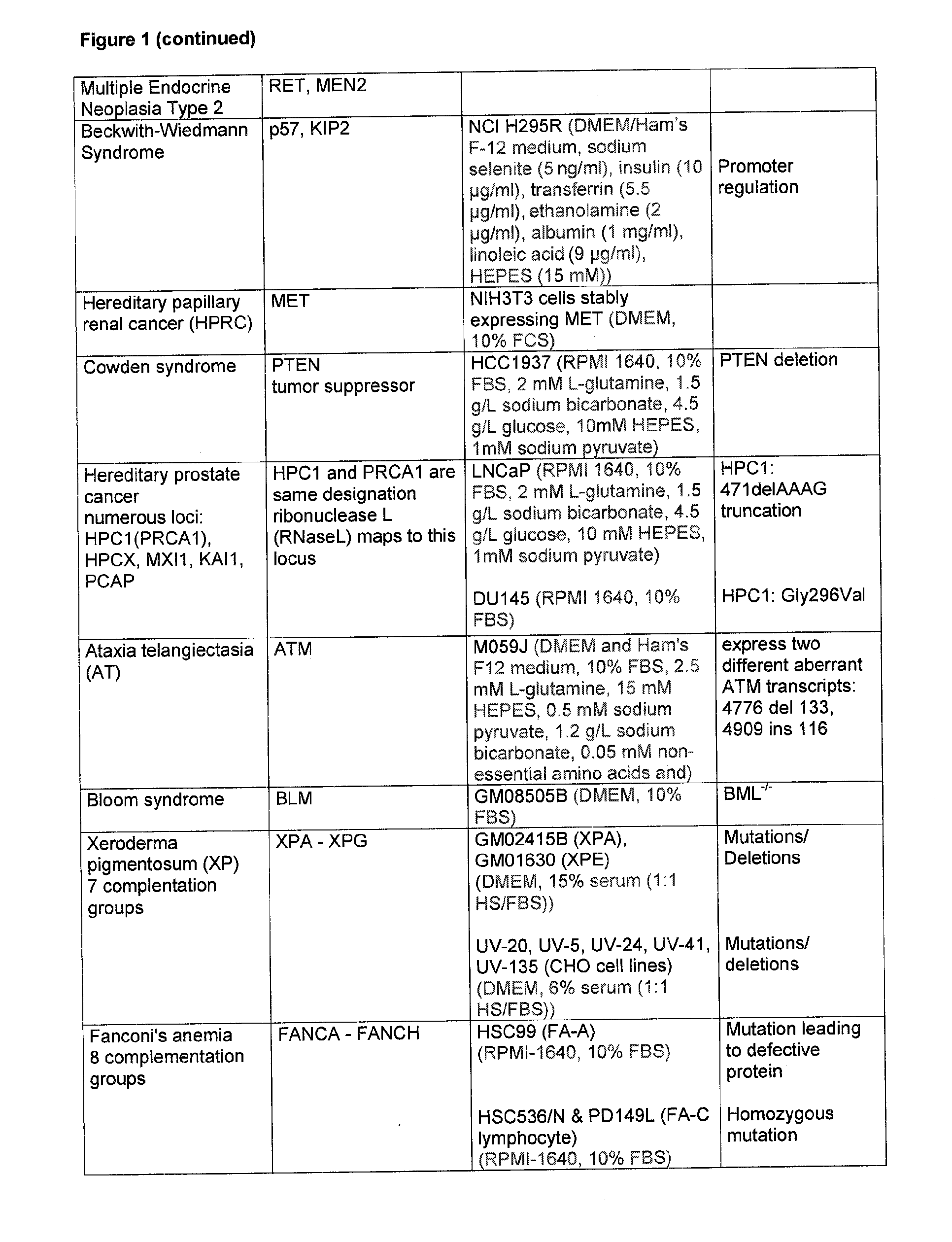Using Inhibitors of Histone Deacetylases for the Suppression Therapy of Inherited Disease Predisposing Conditions
a technology of histone deacetylase and inhibitors, which is applied in the direction of depsipeptides, peptide sources, peptide/protein ingredients, etc., can solve the problems of destabilisation of the interaction of histones with dna, accelerate the progression rate of glomerulonephritis, and reduce the effect of glomerulonephritis ra
- Summary
- Abstract
- Description
- Claims
- Application Information
AI Technical Summary
Benefits of technology
Problems solved by technology
Method used
Image
Examples
example 1
[0249] Data on the inhibitory activity by 2PPA on cells that harbour mutations or polymorphisms in gene loci frequently found to be inherited in predisposing conditions in men.
[0250] Loss of viable cells upon treatment with 2-propyl pentanoic acid (MTT tests).
[0251] Methods:
[0252] Cell Lines and Cell Culture
[0253] In FIG. 1 cell lines are listed with proven mutations of crucial genes which in an inherited way establish a condition that predisposes a person to develop a disorder. The cells were grown in the respective medium as described in FIG. 1.
[0254] Cell Viability Assays
[0255] The cell lines listed in table 1 were seeded in 96 well plates at a density of 1×104 cells / well in normal growth medium. 2-propyl pentanoic acid was added at final concentrations between 0.5 and 3 mM to triplicate samples and the cells were incubated for 40 h to 70 h. Control cells were grown in the absence of 2-propyl pentanoic acid. Ten μl of 10 mg / ml 3-(4,5-dimethylthiazole-2-yl)-2,5 diphenyltetra...
example 2
[0258] Treatment of mice carrying a germ line APCmin mutation with 2-propyl pentanoic acid leads to a reduced number of colorectal adenomas.
[0259] Methods:
[0260] Animal Experiments
[0261] Ten to sixteen weeks old age- and sex-matched heterozygous C57BL / 6J-APCmin mice (Jackson Laboratories, Bar Harbor, Me.) were either left untreated or were treated with 2-PPA or Celecoxib. Control animal were injected (i.p.) with PBS. 2-PPA was injected as isotonic aequous solution of the sodium salt (2×400 mg / kg / day) for four weeks, while Celecoxib was fed to the animals ad libidum at 1250 ppm (0, 12%) for four weeks. At necropsy entire intestinal tracts were opened longitudinally and fixed in 10% phosphate buffered formaldehyde for 24 h. Polyp contrast was increased performing a 1 min staining in 0.1% methylene blue prior to determination of polyp numbers and sizes under a dissecting microscope by two independent observers unaware of the treatment that the mice had received.
[0262] Results:
[026...
example 3
[0267] Modulation of the expression of immunologically relevant proteins such as inflammatory cytokines. Treatment of human immortalized keratinocytes and peripheral blood lymphocytes with different HDAC inhibitors results in a reduction of inflammatory cytokines (FIGS. 3 to 7).
[0268] Methods:
[0269] Isolation of Total RNA from Human Immortalized Keratinocytes
[0270] Human immortalized keratinocytes (HaCaT cells) were seeded at a density of 2.5 million cells per ml into 75 cm2 flasks. Cells were either left untreated or preincubated with 200 nM trichostatin A (TSA) or 5 mM 2-propyl-pentanoic acid (2PPA) for 4 hours at 37° C. followed by subsequent stimulation with lipopolysaccharide (LPS) (100 ng / ml). After 24 hours at 37° C. cells were lysed and total RNA was isolated using the RNeasy mini kit from Qiagen.
[0271] Isolation and Treatment of Peripheral Blood Mononuclear Cells
[0272] Monocyte and macrophage depleted peripheral blood mononuclear cells were obtained from consenting adu...
PUM
| Property | Measurement | Unit |
|---|---|---|
| pH | aaaaa | aaaaa |
| incubation time | aaaaa | aaaaa |
| chromatin structure | aaaaa | aaaaa |
Abstract
Description
Claims
Application Information
 Login to View More
Login to View More - R&D
- Intellectual Property
- Life Sciences
- Materials
- Tech Scout
- Unparalleled Data Quality
- Higher Quality Content
- 60% Fewer Hallucinations
Browse by: Latest US Patents, China's latest patents, Technical Efficacy Thesaurus, Application Domain, Technology Topic, Popular Technical Reports.
© 2025 PatSnap. All rights reserved.Legal|Privacy policy|Modern Slavery Act Transparency Statement|Sitemap|About US| Contact US: help@patsnap.com



